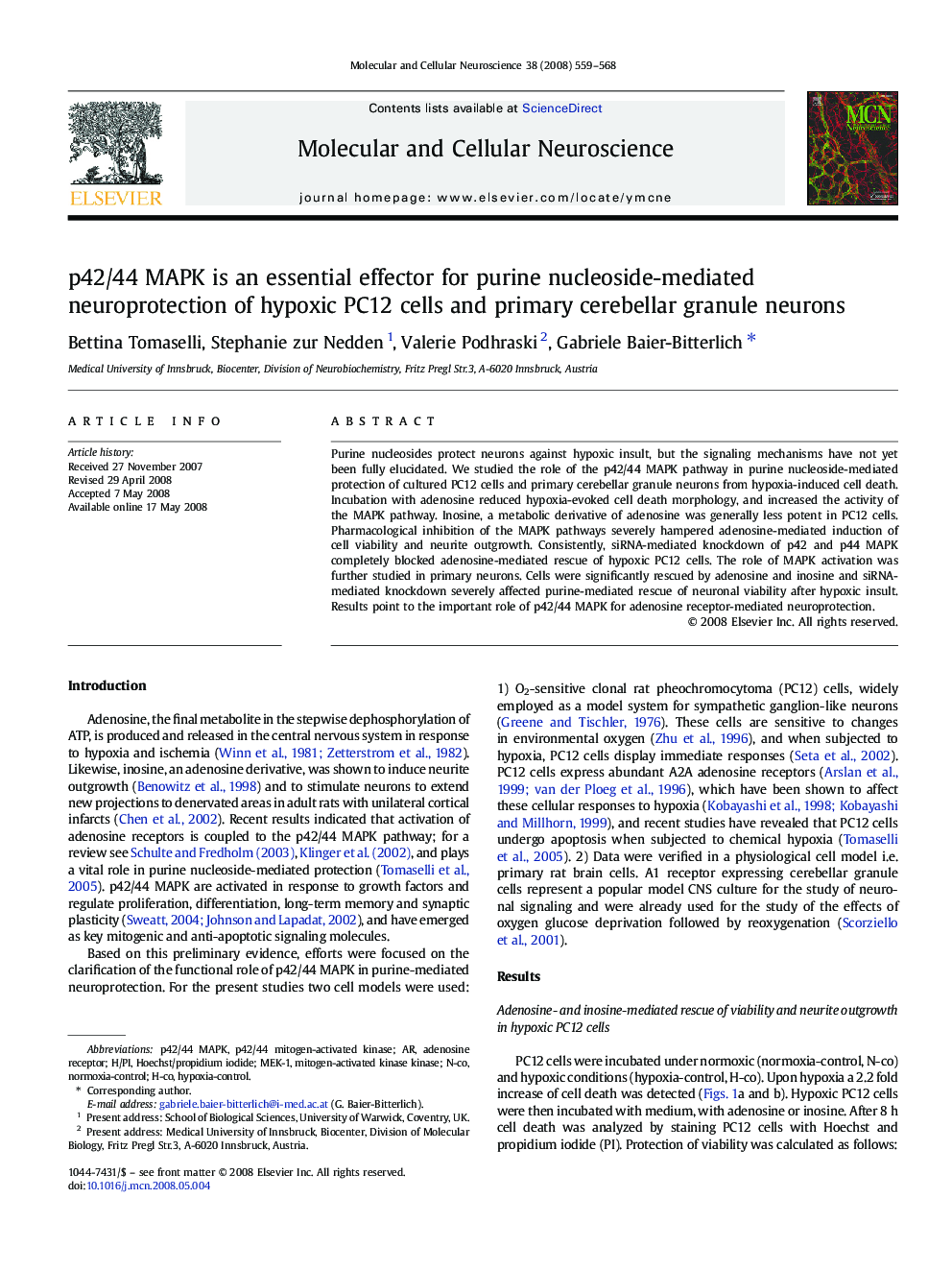| Article ID | Journal | Published Year | Pages | File Type |
|---|---|---|---|---|
| 2199025 | Molecular and Cellular Neuroscience | 2008 | 10 Pages |
Purine nucleosides protect neurons against hypoxic insult, but the signaling mechanisms have not yet been fully elucidated. We studied the role of the p42/44 MAPK pathway in purine nucleoside-mediated protection of cultured PC12 cells and primary cerebellar granule neurons from hypoxia-induced cell death. Incubation with adenosine reduced hypoxia-evoked cell death morphology, and increased the activity of the MAPK pathway. Inosine, a metabolic derivative of adenosine was generally less potent in PC12 cells. Pharmacological inhibition of the MAPK pathways severely hampered adenosine-mediated induction of cell viability and neurite outgrowth. Consistently, siRNA-mediated knockdown of p42 and p44 MAPK completely blocked adenosine-mediated rescue of hypoxic PC12 cells. The role of MAPK activation was further studied in primary neurons. Cells were significantly rescued by adenosine and inosine and siRNA-mediated knockdown severely affected purine-mediated rescue of neuronal viability after hypoxic insult. Results point to the important role of p42/44 MAPK for adenosine receptor-mediated neuroprotection.
